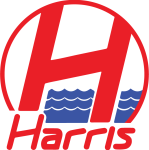In the ever-evolving landscape of urban construction, staying abreast of the latest building codes is essential for safety and compliance. New York City, known for its stringent regulations, released an important Building Bulletin in 2011 that addressed the specificity of pipe lining repairs within the plumbing systems. However, as of November 7, 2022, Building Bulletin 2011-022 has been officially rescinded and superseded. In this article, we’ll review the details of the original bulletin, its implications for construction and repair practices, and the significance of its recent supersedure.
A Glimpse at Bulletin 2011-022: Bulletin 2011-022, issued on November 10, 2011, by the NYC Buildings Department, provided clarification on cured-in-place pipe (CIPP) and epoxy spray pipe lining repairs. The bulletin aimed to demystify the materials and methods approved by the New York City Plumbing Code, particularly in chapters relating to water supply and sanitation.
The document explicitly detailed the process of CIPP, a method involving the rehabilitation of existing pipe systems by inserting resin-impregnated pipe liners without the need for extensive excavation. This trenchless technology was highlighted for its effectiveness in repairing sections of pipe by creating a pipe within a pipe, ensuring structural integrity and leak prevention.
The Importance of Code Compliance: The 2011 bulletin played a crucial role in dictating the standards for plumbing repairs in NYC. It stressed the importance of adhering to code sections AC 28-113.2.2, PC Chapter 7, PC Chapter 6, and PC Chapter 11. Compliance with these codes ensures the reliability, effectiveness, fire resistance, durability, and safety of plumbing systems throughout the city.
Transition to the 2022 NYC Construction Code: The rescindment of Bulletin 2011-022 and its replacement with a new code underscores the city’s commitment to modernizing construction practices and maintaining the highest safety standards. The 2022 NYC Construction Code, effective from November 7, 2022, brings forth updated regulations that reflect the latest technological advancements and industry standards.
Conclusion: The rescission of Building Bulletin 2011-022 serves as a reminder of the dynamic nature of construction regulations. It is imperative for industry professionals, including contractors, engineers, and plumbers, to stay informed about the current codes to ensure their work is compliant and up to the city’s rigorous safety standards. By understanding the specifics of these codes, professionals can continue to build safe and live safe, contributing to the well-being and resilience of NYC’s infrastructure.
Call to Action: Stay updated with the latest construction codes by consulting the NYC Buildings Department’s official resources. If you’re involved in plumbing repairs or construction in NYC, familiarize yourself with the 2022 NYC Construction Code to ensure your projects are compliant and safe. For more insights into construction codes and industry best practices, follow our blog and join our community of construction professionals.
Addressing the Pitfalls of Sewer Pipe Lining: A Cautionary Note
While sewer pipe lining, such as cured-in-place pipe (CIPP), offers a less intrusive alternative to traditional pipe replacement, it is imperative to acknowledge that it may not always be a long-term solution. One of the critical concerns surrounding this method is its potential as a temporary fix, which can lead to significant costs without delivering a durable outcome. It’s not uncommon for contractors to charge substantial fees for the installation of a pipe liner, which, to the dismay of the property owner, could falter in as little as one to two years. This revelation can be particularly frustrating when considering that, for a marginally higher investment, a complete sewer line replacement could have been achieved, offering a more permanent solution.
Given the substantial investment and the potential for short-term fixes, vigilance is crucial. Property owners who are approached by contractors or licensed plumbers promoting pipe liners as a definitive solution should exercise due diligence. It’s advisable to inquire about the longevity and warranty of the liner and compare the cost against that of full pipe replacement. If you suspect that a contractor is advocating for a pipe lining solution that may not be in your best interest, or if you become aware of any practices that could be misleading to others, reporting these instances to the NYC Department of Buildings (DOB) is a responsible course of action. This not only aids in your protection but also helps prevent other property owners from facing similar predicaments. By fostering a community of informed and cautious consumers, we can collectively work towards maintaining the integrity and reliability of our city’s infrastructure.




















